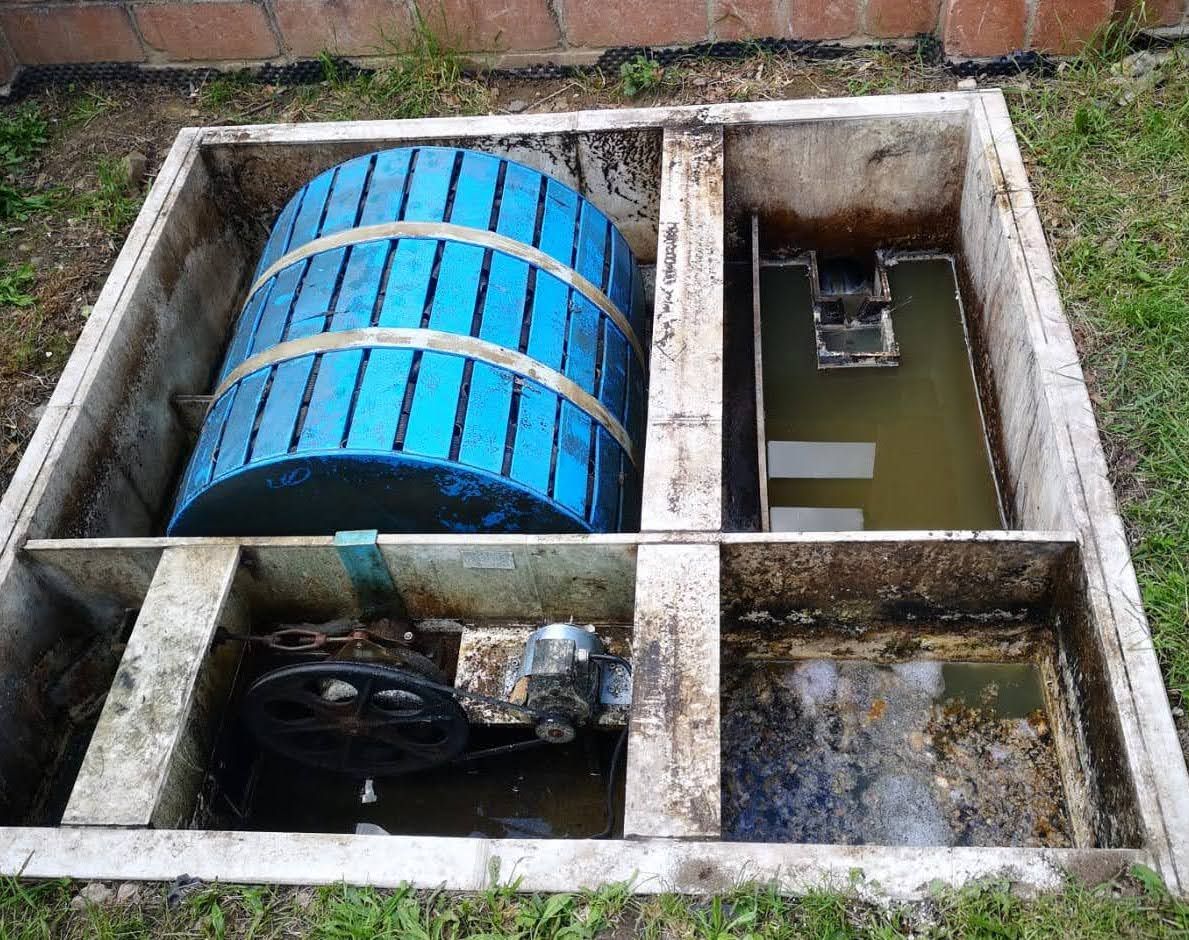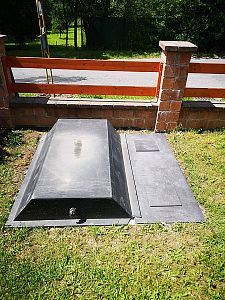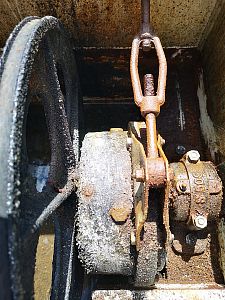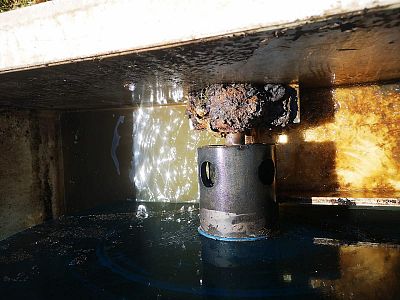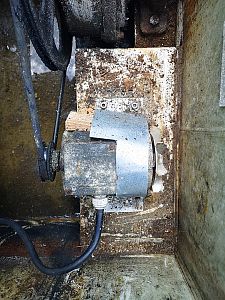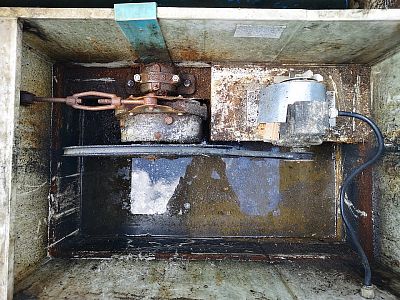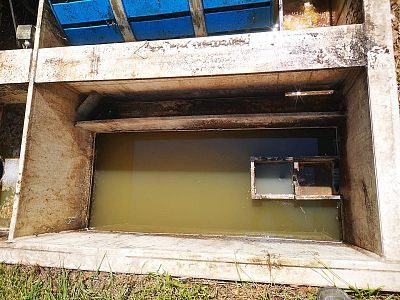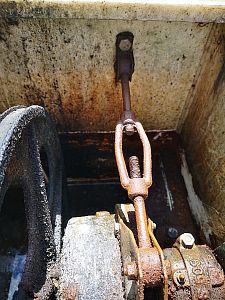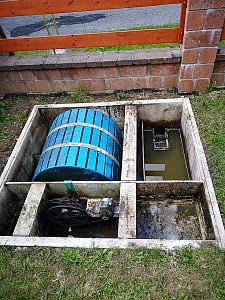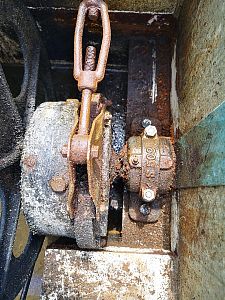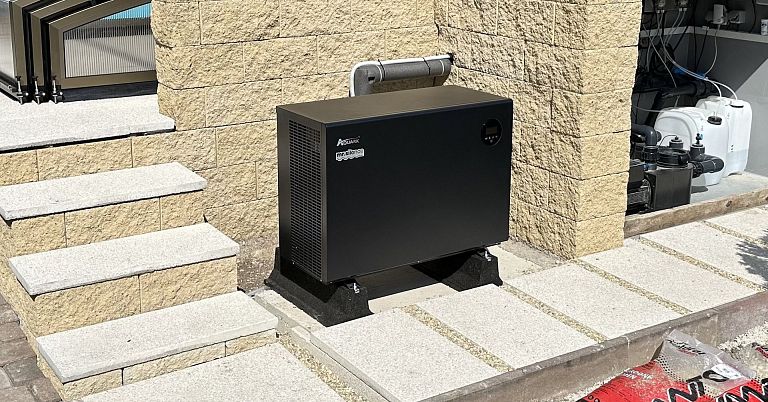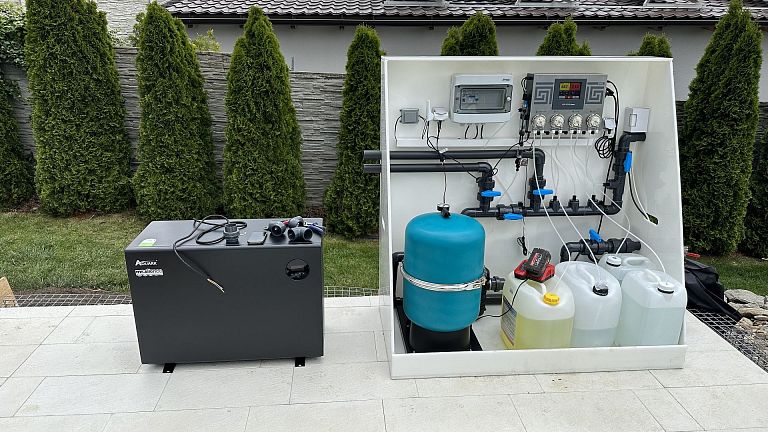Are you looking for wastewater treatment equipment for hotels, restaurants or other smaller establishments? We offer the EKOL 2.5 sewage treatment plant for up to 15 people, which is also suitable for places without a connection to the sewage system.
If you are looking for a plant for a heavier load, we recommend the EKOL 4, EKOL 6, EKOL 9, EKOL 12 or EKOL 15. If, on the other hand, you are looking for a suitable model for a less busy facility, choose the EKOL 1 designed for only 7 persons.
Description and functions of the EKOL 2.5 sewage treatment plant
The basis of the EKOL 2.5 is the tank, which is made of wall elements and polypropylene plates. The tank is enclosed by a split removable lid, which contains ventilation and clean-out holes for sludge removal and is non-penetrating.
The tank is divided into a primary sedimentation - settling area (A), a storage area (E), a biological treatment area (C) with a rotating biocontactor (B) and a settling area (D). The biocontactor consists of a cage filled with small plastic elements. The rotation of the rotor is provided by a drive unit consisting of a sliding gear box, a V-belt transmission, an electric motor with a distributor.

How the EKOL 2.5 wastewater treatment plant works
The treatment is integrated in one packaged unit, where there is both a mechanical treatment section (A,D,E) and a biological treatment section (B,C). Mechanical cleaning is carried out in a two-chamber settling tank (A) by simple sedimentation. A part of this area near the bottom is reserved for anaerobic sludge stabilisation, thickening and storage (E). Pre-treated water flows into the biological treatment area (C) where the progressive TF/SC method, first introduced in the USA 15 years ago, is used.
This treatment method uses the activity of sessile and buoyant organisms. The composition of these micro-organisms is so different that they are complementary in their effects. This results in a balanced treatment effect, and at the same time a higher resistance to hydraulic and metabolic shocks compared to conventional wastewater treatment methods.
The activated mixture from the biozone (C) flows through a degassing chute into a vertical settling tank (D), which is connected to the biozone area (C) at the bottom. This ensures continuous dewatering of the settling tank (D) and the excess activated sludge is pumped back to the settling tank (A) by means of a wheel located on the periphery of the biorotor, where it is mixed with the freshly flowing polluted water.
In the settling and storage tank (A,E), the activated sludge flakes and the sludge water are separated and flow back together with the inflow to the biozone. In this way, communication between the biozone (C), the settling tank - septic tank (A) and the settling tank (D) is ensured. The clean water outlet trough from the settling tank (D) is equipped with adjustable brick walls to prevent floating suspended solids from the surface of the settling tank from escaping into the outlet.


Maintenance of the EKOL 2.5 sewage treatment plant
EKOL serieswastewater treatment plants are maintenance-free. The great thing is that they do not require daily servicing and their functionality will be maintained if there is no power interruption. Remember that once a year running the treatment plant requires draining the stored sludge and twice a year you should manage to lubricate the bearings.
Where the EKOL 2.5 is used
The EKOL 2.5 all-plastic mechanical-biological sewage treatment plant is the perfect choice for locations without a sewage connection. It is typically used to treat sewage from apartment buildings, recreational facilities, hotels, campsites, social facilities, farms and factories for up to 15 equivalent people.
The initial basis for the design and installation of WWTPs are the requirements of the water authorities for the quality of water in the respective watercourse into which the treated wastewater is discharged, the requirements of investors and the planning authorities.
Technical data of the EKOL 2.5 wastewater treatment plant
| Unit | EKOL 2,5 | |
| Equivalent. Residents | EO | 15 |
| Daily water flow |
m3/day |
2,5 |
| Daily BOD5 contribution | kg/day | 1,3 |
| Water depth | mm | 1 500 |
| Total usable volume | m3 | 5,5 |
| Volume of settling (sludge) space | m3 | 3,2 |
| Volume of active space | m3 | 1,5 |
| Volume of existing space | m3 | 0,6 |
| Dosaz. area tank | m2 | 0,8 |
| RBC rotor area | m2 | 226 |
| Rotor speed | RPM | 5,2 |
| Engine power | W/400 V | 120 |
| Total weight | kg | 900 |
| Technical data | ||
| Length | mm | 2 160 |
| Width | mm | 2 000 |
| Tank height | mm | 2 000 |
| Total height | mm | 2 350 |
| Inlet height | mm | 1 620 |
| Outlet height | mm | 1 400 |








